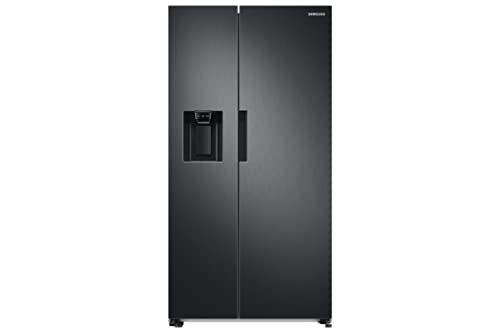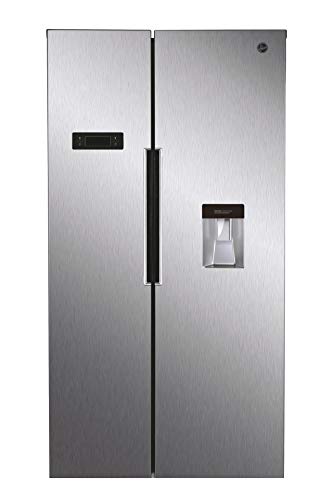Five Killer Quora Answers To Refridgerator UK
페이지 정보

본문
 The History of the Refrigerator
The History of the RefrigeratorThe conventional refrigeration of foods produces significant greenhouse gas emissions because of leakage of refrigerant, as well as electrical power consumption. In 2019, these emissions accounted for 3.2% of total UK territorial GHG emissions.
Fridges didn't become widespread in British homes until the summer of 1959. Prior to this, most households relied on cold slabs in pantries. These were inefficient at maintaining a constant cool temperature and caused much food spoilage.
The History of Fridges in the refridgerator Uk
Fridges are one of the most essential kitchen appliances, which allows us to keep food and drinks fresh for days at a time. They are also extremely energy-efficient. It's easy to forget that refrigerators were once considered a luxury item. In fact it wasn't until the 1950s when they began to really take off. It was the summer heat of Britain that led to their popularity.
Before refrigerators were invented, people used insulated iceboxes to keep their food cool. They would collect blocks of ice from lakes in the winter, and then keep them in storage throughout the warmer months. These boxes of ice were far from ideal, however. They were carried around by an iceman and were heavy. In 1918 the first refrigerators with electric motors were released to the market. However, it took a long time before they were widely used in homes.
Today, refrigerators are more efficient in terms of energy usage than they were a decade ago. They use less energy than they did 10 years ago. Some fridges use only 4 kW*h of power per day (equivalent of 170 W continuously). Many domestic refrigerators have an A+ energy rating.
In the 1950s, manufacturers began to introduce refrigerators that had separate compartments for freezers. They also began producing models with a chrome finish which was extremely popular at the time. Since then, refrigerators are offered in a variety of colors and finishes. Pastel shades, such as turquoise and pink, were popular in the 1960s. Earth tone colors, such as avocado green and almond, became increasingly popular in the 1970s and the 1980s. In the 1990s, stainless steel had become popular.
Fridges in the 1920s
Before fridges came along people made use of wooden "ice boxes" to store food and drinks that were fresh. Ice men would bring blocks of ice to fill them, and they kept things cool throughout the year. Ice boxes were typically located in kitchens of wealthy households.
The first electric refrigerator was first introduced in 1918 and was placed on top of the current Ice box. They were noisy, bulky and expensive. The motor was situated on the top of the refrigerator cabinet. They were also referred to as monitor-tops. William C. Durant purchased the Mellowes Refrigerator Company in 1918, and set up the Guardian Frigidaire to mass-produce refrigerators. Durant was inspired by a design developed by Cistercian monk Marcel Audiffren and Swiss engineer Albert Singrun. This was an absorption refrigerator that used sulfur dioxide as the refrigerant.
In the 1920s, these modern refrigerators were affordable for many homes. They were able to accommodate more food and drinks and kept it cooler for longer than older ice boxes.
Refrigerator advertising was creative, captivating and full of promises of refreshing drinks and chic designs. The ads from the past are fascinating to read as they give us a glimpse into the way things were in the past.
At the time of the 1920s, refrigerators with electric power were commonplace in homes. Electric utilities aided this trend by offering rebates on their bills to customers who bought refrigerators. The popularity of these appliances increased even more during the Great Depression when they were considered vital to the survival of the home.
Fridges in 1950s
Refrigerators were not widely available in the 1920s, but were more commonplace in the 1950s. In the 1960s they were found in almost every home (although it is important to note that you wouldn't have found a fridge in every home in the past, since it was a costly purchase for many).
Early fridges were utilitarian and simple appliances that fit in with the decor of the kitchen. The refrigerators were typically smaller and were mounted on legs. They came in a variety of colors (though the majority of them were pastels such as mint). During this time there were several companies making refrigerators such as Whirlpool, Gibson, Hotpoint, and Tappan.
These brands were known for high-quality and reliable refrigerators. They also diversified their product lines, providing other types of appliances for homes. Crosley, for example, was first a radio maker before transforming into refrigerators in the year 1940. They were renowned for their small refrigerators that fit well in small space.
In the 1950s, refrigerators became more stylish and were marketed to housewives as a status sign. They were designed to match cabinets and walls of the kitchen, and were usually white and had chrome handles.
In the 1960s, refrigerators began to develop into appliances that had separate freezers and ice cube makers. Manufacturers also began to use less expensive materials, which allowed them to offer their products at a lower cost.
Fridges in 1960s
In the 1960s, refrigerators became a necessity in many households. Some families even had two refrigerators. In the 1960s, the average American fridge cost $600 (roughly $7000 in 2024 dollars). By the end of the decade, the cost had dropped to just $200.
The fridge was a huge advancement at the time. It revolutionized kitchens and changed the way we preserved our food. The fridge was also a wonderful home comfort, as it kept dairy and meat longer in freshness. This enabled people to purchase bulk quantities prepare meals ahead of time and then keep them in the fridge.
Early refrigerators used toxic gases like ammonia, sulfur dioxide and methyl chloride to cool food. This was dangerous for humans as these gases leak out of refrigerators. Many people died of poisoning, and it was only in 1929 that a more secure method for cooling food, made of carbon dioxide, was created.
It allowed manufacturers to create safer and more efficient refrigerators that could be used in homes. Some refrigerators had an internal freezer that was accessible by opening the refrigerator door. These were called bi-door fridges and they were very popular in the 1950s and 1960s.
Refrigerators of the 1960s were more futuristic than those of today, with soft curves and a sleek look that suggested an era of convenience and domestic freedom. They were still relatively large, but the boxy appearance of refrigerators from the 1940s was beginning to fade.
fridges uk Today
Modern fridge freezers for sale freezers are available in a variety of colours, styles and finishes that can be customised to suit your kitchen and personal preferences. Certain fridge freezers feature smart features that connect to Wi-Fi. This lets you quickly adjust the settings. Others even have an integrated camera to check inside the refrigerator.
French door models are now dominating the market, as consumers want modern looks and features like water or ice dispensers and flex drawers. In some cases, a smart screen. A lot of these appliances are also classified as A, B or even A+ for energy efficiency following the revamping of the labelling system that is mandatory in UK appliances.
This Hotpoint model is a popular choice due to its sleek design. It comes with an innovative UVNano self-sterilizing technology that kills bacteria in the fridge. Also, it has two salad drawers that have adjustable humidity sliders. It's also large, with plenty of room for bottles, jars and a large utility compartment in the fridge's door.
Find fridges that have the green ICE+ feature that uses less energy. Alternatively, you could save even more by opting for a model with an automatic ice maker, which creates a continuous supply of ice that's ready to use in the morning.
 A fridge that is A or A+ in terms of energy efficiency is one of the most beneficial actions you can take to protect the environment. When selecting a refrigerator it is recommended to include the annual consumption of electricity of the fridge freezer to buy into your household budget. It is important to remember that the world is not a place where we can afford to take energy for granted: everyone deserves access to affordable, reliable energy to lead the quality of their lives and protect our planet.
A fridge that is A or A+ in terms of energy efficiency is one of the most beneficial actions you can take to protect the environment. When selecting a refrigerator it is recommended to include the annual consumption of electricity of the fridge freezer to buy into your household budget. It is important to remember that the world is not a place where we can afford to take energy for granted: everyone deserves access to affordable, reliable energy to lead the quality of their lives and protect our planet.- 이전글10 . Pinterest Account To Be Following About Trucking Accident 24.12.16
- 다음글4 Dirty Little Details About Replacement Skoda Key And The Replacement Skoda Key Industry 24.12.16
댓글목록
등록된 댓글이 없습니다.

